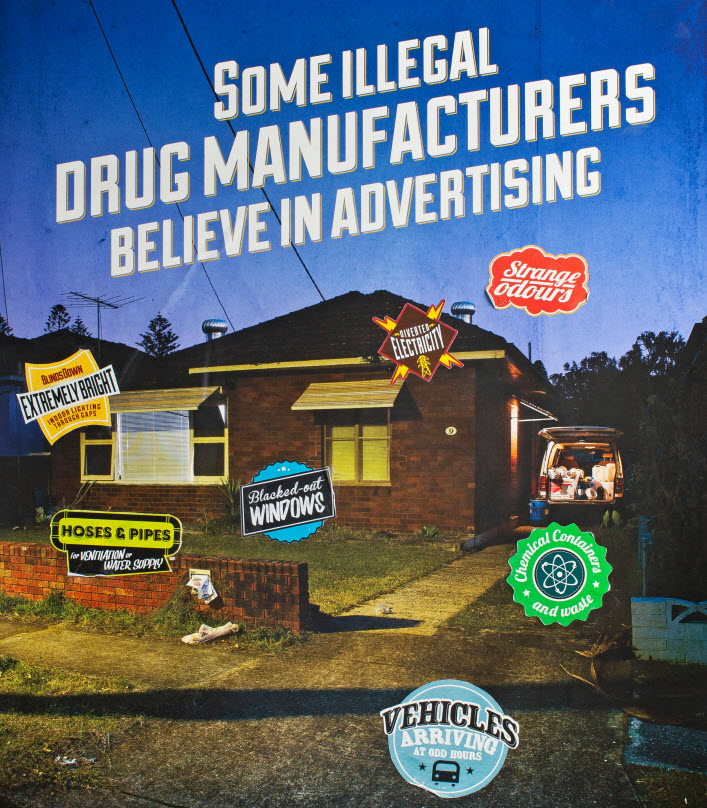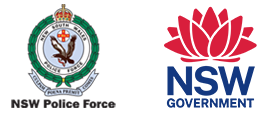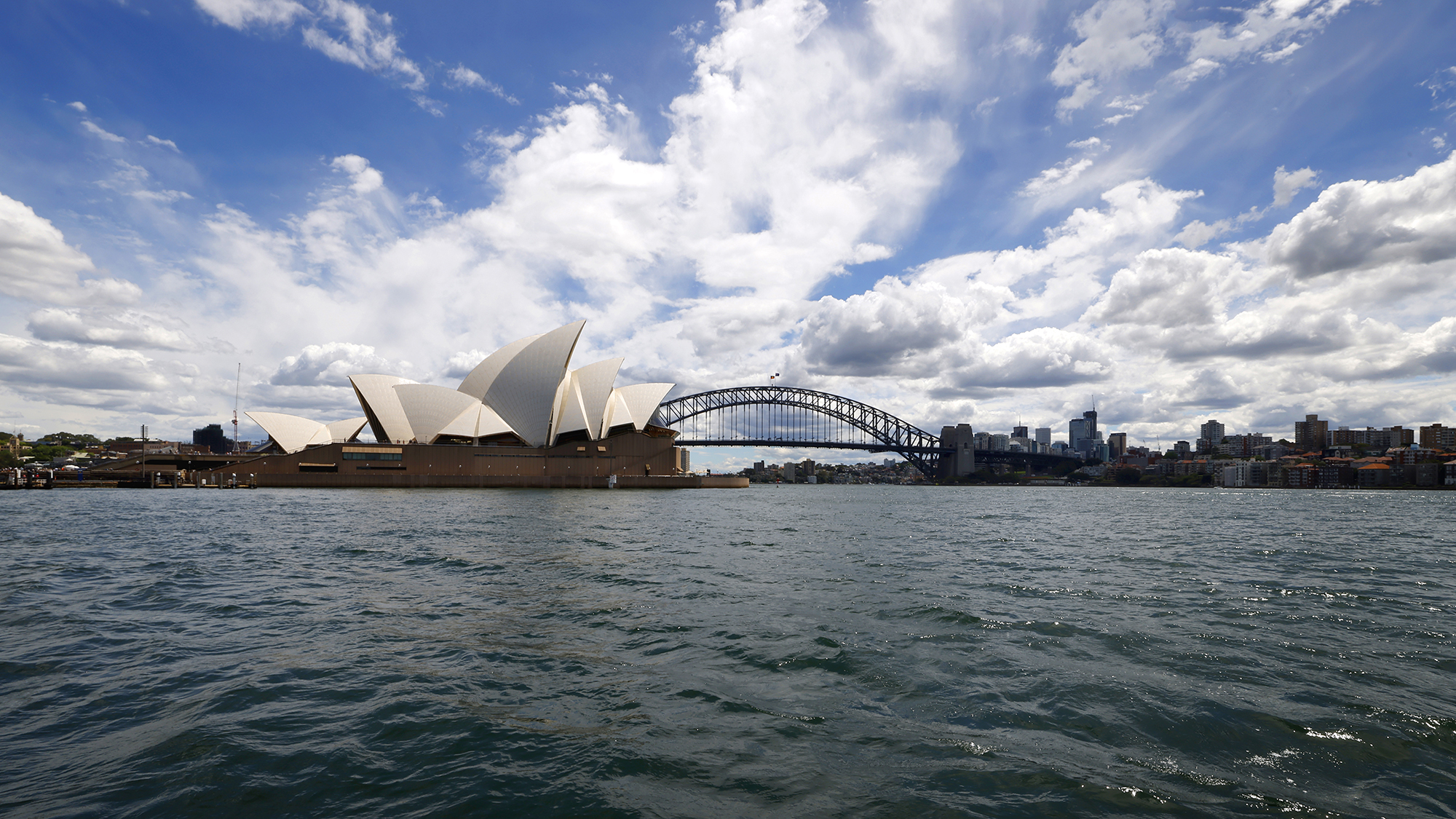Despite the efforts of police and other agencies some people continue to use drugs. In recognition of this, NSW Police Force supports and operates within the principles of harm minimisation and Australia’s National Drug Strategy.
Harm minimisation is not about condoning drug use, rather it refers to policies and programs designed to prevent and reduce harm associated with both licit and illicit drugs. Harm minimisation encompasses:
- Supply reduction strategies to disrupt or reduce the production and supply of illegal drugs; and control, manage and/or regulate the availability of legal drugs;
- Demand reduction strategies to prevent or delay the uptake of alcohol, tobacco and other drug use; reduce substance misuse and support people to recover from dependence and reintegrate with the community; and
- Harm reduction strategies to reduce the adverse health, social and economic consequences of the use of alcohol, tobacco and other drugs.
National Drug Strategy
The National Drug Strategy recognises that optimal results are achieved when supply reduction measures operate together with demand reduction and harm reduction strategies involving law enforcement, the health sector, community and regulatory agencies. NSW Police Force activities are consistent with the National Drug Strategy.
NSW Police Force activities:
- target those involved in illicit drug supply;
- aim to make illicit drugs less available;
- provide drug offenders with opportunities to address drug problems;
- increase the likelihood of people seeking treatment; and
- reinforce the message that illicit drug use is not condoned by the community.
Drug Programs and Initiatives
Overdose
When attending a drug overdose, preservation of life is a law enforcement priority. NSW Police Force encourages police officers to exercise their discretion not to charge people present at drug overdoses for minor drug matters. This is designed to remove any reluctance that people may have to call an ambulance due to fear of police prosecution.
Police drug diversion strategies
Research indicates that there is a significant link between drug use and crime. Some drug users engage in crime to pay for the drugs they use, for example property theft.
Drug diversion initiatives give offenders who use drugs the chance to undertake education and/or treatment aimed at helping them to stop using drugs and committing further crimes.
Drug diversion initiatives do not change the legal status of drugs. Possession and use of illegal drugs remain criminal offences. Drug and alcohol diversion programs that NSW Police Force operates or is involved with include:
1. Cannabis Cautioning Scheme
The Cannabis Cautioning Scheme provides for formal cautioning of adults detected for minor cannabis offences. The Scheme uses police intervention to assist individuals to consider the legal and health ramifications of their cannabis use and seek treatment and support.
The Scheme has been in place since 2000, and is operated by NSW Police Force. The Scheme was developed in response to a 1999 NSW Drug Summit finding. The Scheme recently underwent some enhancements to better align it with the Early Drug Diversion Initiative, a diversion scheme for low-level drug offences in relation to other types of prohibited drugs.
Police can exercise their discretion in appropriate cases and issue a caution. Police are still able to decide instead to formally charge offenders.
A person can only be cautioned twice and cannot be cautioned at all if they have prior convictions for serious drug offences (unless spent), such as supplying cannabis. Drug dealers continue to be arrested and prosecuted under the Drug Misuse and Trafficking Act 1985.
The Caution
The formal NSW Police Force caution warns of the health and legal consequences of cannabis use. The caution notice provides contact telephone numbers for the Cannabis Caution Line, which provides a dedicated, confidential service to a cautioned individual that includes information about treatment, counselling and support services.
People who receive a caution are encouraged to contact the Cannabis Caution Line for a telehealth session about their cannabis use.
2. Magistrates Early Referral Into Treatment (MERIT)
The Magistrates Early Referral Into Treatment (MERIT) program is designed for offenders with drug problems who are eligible for bail and who may benefit from treatment and rehabilitation. MERIT aims to reduce drug-related crime by assisting eligible offenders to address drug problems that may be contributing to criminal behaviour.
MERIT is voluntary and provides the offender with an opportunity to engage in treatment prior to their hearing. The offender's progress in treatment may be considered during the final hearing and sentence.
MERIT accepts referrals for assessment from multiple sources, including police. Formal endorsement of participation in MERIT sits with magistrates.
Offenders deemed appropriate for MERIT can generally commence treatment soon after referral.
Participants are closely case-managed throughout their bail period by trained health professionals. The magistrate receives regular reports on their progress until the court case is finalised at the end of the court bail period, which is usually three months. If the defendant fails to attend treatment, commits further offences, or does not comply with bail conditions, the magistrate is notified.
Offenders charged with strictly indictable drug offences or sexual assault offences are not eligible for MERIT. Find out more about MERIT
3. Diversion under the Young Offenders Act 1997
Under the NSW Young Offenders Act 1997 young people (under 18 years of age) who commit minor drug offences (such as possession of small quantities) may be eligible for a warning, a caution or a conference, in place of being charged for the offence.
4. Adult Drug Court
The NSW Adult Drug Court aims to help adult offenders with serious drug problems to break the drug-crime cycle by providing a supervised program of treatment and rehabilitation.
5. Early Drug Diversion Initiative
The Early Drug Diversion Initiative is a NSW Government initiative that offers an alternative legal process for low-level drug offences.
Under the initiative, police have the option to issue up to two $400 on-the-spot fines as an alternative to a court attendance notice when dealing with low-level drug offending.
Offenders can choose to pay the fine, attend court, or have their fine waived if they engage in a telehealth consultation about their drug use.
Drug Types
Types of illicit drugs
Definitions via Your Room. A joint initiative by NSW Health and St Vincent's Alcohol and Drug Information Service.
Ecstasy
Ecstasy tablets are supposedly made up of the primary ingredient methylenedioxymethamphetamine (MDMA), but as the ingredients required to make synthetic drugs are becoming more difficult to obtain, the formulation of pills marketed as ecstasy can vary greatly. They are more likely to contain methamphetamine (speed) combined with a synthetic hallucinogen or para-methoxyamphetamine (PMA). More informtion
Marijuana
Marijuana (cannabis) primarily comes from the cannabis plant (cannabis sativa). The cannabis plant is also used to produce hashish (hash) and hash oil. Of the three, marijuana (cannabis) is the most common but all forms of the drug are capable of causing a variety of physical and mental problems resulting from intoxication and long-term use. More information
Methylamphetamine
Methylamphetamine is a strong stimulant drug. The drug comes as crystals, powder, wet paste and sometimes pills. ‘Ice’ and ‘crystal’ are names for methylamphetamine in its crystalline form. ‘Speed’, ‘go-ee’, ‘whiz’ and ‘meth’ are other names for methylamphetamine. All forms of methylamphetamine are illegal. More information
Cocaine
Cocaine, or coke as it is commonly known, is a stimulant and has a similar effect to amphetamines like speed and ice, but produces a more intense effect and shorter ‘high’ depending upon dosage. Cocaine is a white crystalline powder with a bitter numbing taste. More information
GHB
GHB is a drug commonly found in the dance scene and is sometimes referred to as liquid ecstasy due to its stimulating, euphoric and supposed aphrodisiac qualities. Chemically-speaking, it is not related to MDMA at all. Mildly salty in flavour, yet colourless and odorless, it’s also used a date-rape drug – when mixed with alcohol, it can intoxicate quickly. More information
Heroin
Heroin is one of a group of drugs known as "opiates". Other opiates include opium, morphine, codeine, pethidine, oxycodone, buprenorphine and methadone. Heroin and other opiates are depressants. Depressants do not necessarily make you feel depressed. Rather, they slow down the activity of the central nervous system and messages going between the brain and the body. More information
New Psychoactive Substances
New psychoactive substances are chemicals that have been developed to have similar effects to illegal drugs like cannabis, cocaine and methamphetamine. A wide variety of these drugs have appeared in Australia in the past few years. New psychoactive substances are generally sold online and through adult stores and tobacconists.
They are marketed with confusing or misleading descriptions such as ‘legal highs’, ‘herbal highs’, ‘bath salts’ or ‘plant food’. Products may be labelled ‘not for human consumption’ or ‘for novelty purposes’ despite the fact that they are intended for use as drugs. While they are sometimes referred to as ‘research chemicals’, these substances do not have a legitimate pharmaceutical or therapeutic use. More information
Other
There is a wide range of other drugs out there that are just as dangerous as the more commonly used ecstasy or marijuana. These drugs include depressants (such as sleeping pills), hallucinogens like LSD, ketamine or inhalants. While they are legal, alcohol and tobacco are also drugs that can have dangerous consequences if misused. More information
Signs of Drug Supply and Manufacturing
Seven telltale indicators of drug manufacturing and supply
- Strange odours emanating from the property
- Diverted electricity
- Chemical containers and waste
- Blacked out windows
- Hoses and pipes in strange places
- Blinds down, with extremely bright indoor lighting radiating through gaps
- Vehicles arriving at odd hours
Police urge anyone with information about suspicious properties to call Crime Stoppers on 1800 333 000 or use the Crime Stoppers online reporting page. Information you provide will be treated in the strictest of confidence.

How To Report Illegal Drugs
What to do if you suspect drugs are being made or supplied in your community
Police urge anyone with information about suspicious drug-related activity to call Crime Stoppers on 1800 333 000 or use the Crime Stoppers online reporting page. Information you provide will be treated in the strictest of confidence
What to do if you find illegal drugsIf you find drugs, you should immediately telephone the Police Assistance Line on 131 444 who will arrange for police to attend and collect the drugs. You should not touch or move the drugs.
Useful Resources
The following agencies and surveys produce some of the data that informs the NSW Police Force response to drugs:
- The Illicit Drug Reporting System (IDRS) monitors the price, purity, availability and patterns of use of illicit drugs such as heroin, methylamphetamine, cocaine and pharmaceutical opioids among urban samples of people who use drugs nationally.
- The Ecstasy and Related Drugs Reporting System (EDRS) monitors the price, purity, availability and patterns of use of illicit drugs such as ecstasy, methylamphetamine, cocaine, ketamine, GHB, LSD and NPS among people who regularly use ecstasy (MDMA).
- The Australian School Students Alcohol and Drug (ASSAD) survey provides information on the use of tobacco, alcohol, and illegal and legal drugs amongst 12 to 17 year olds, and their attitudes toward these substances.
- Australian Crime Commission (ACC) Illicit Drug Data Reports provide annual statistical overviews of illicit drug arrests and seizures as well as profiling the current situation, national impact and the emerging illicit drug trends and threats. The ACC also publishes annual Organised Crime in Australia assessments.
- The Australian Institute of Criminology undertakes research on a range of issues including links between drug use and criminal activity and patterns of drug use amongst police detainees.
- The NSW Bureau of Crime Statistics and Research (BOCSAR) is the official source of NSW crime information. BOCSAR uses NSW Police Force data and data from other sources.
- The National Drug Research Institute and the National Drug and Alcohol Research Centre (and its associated Drug Policy Modelling Program) undertake a range of research projects that aim to improve Australia’s evidence base and policy direction.
- The Alcohol and Drug Information Service (ADIS) NSW
- Drug and Alcohol Multicultural Education Centre (DAMEC)
- Alcohol and Drug Foundation
- Your Room – provides drug and alcohol information and advice, campaigns and resources.

